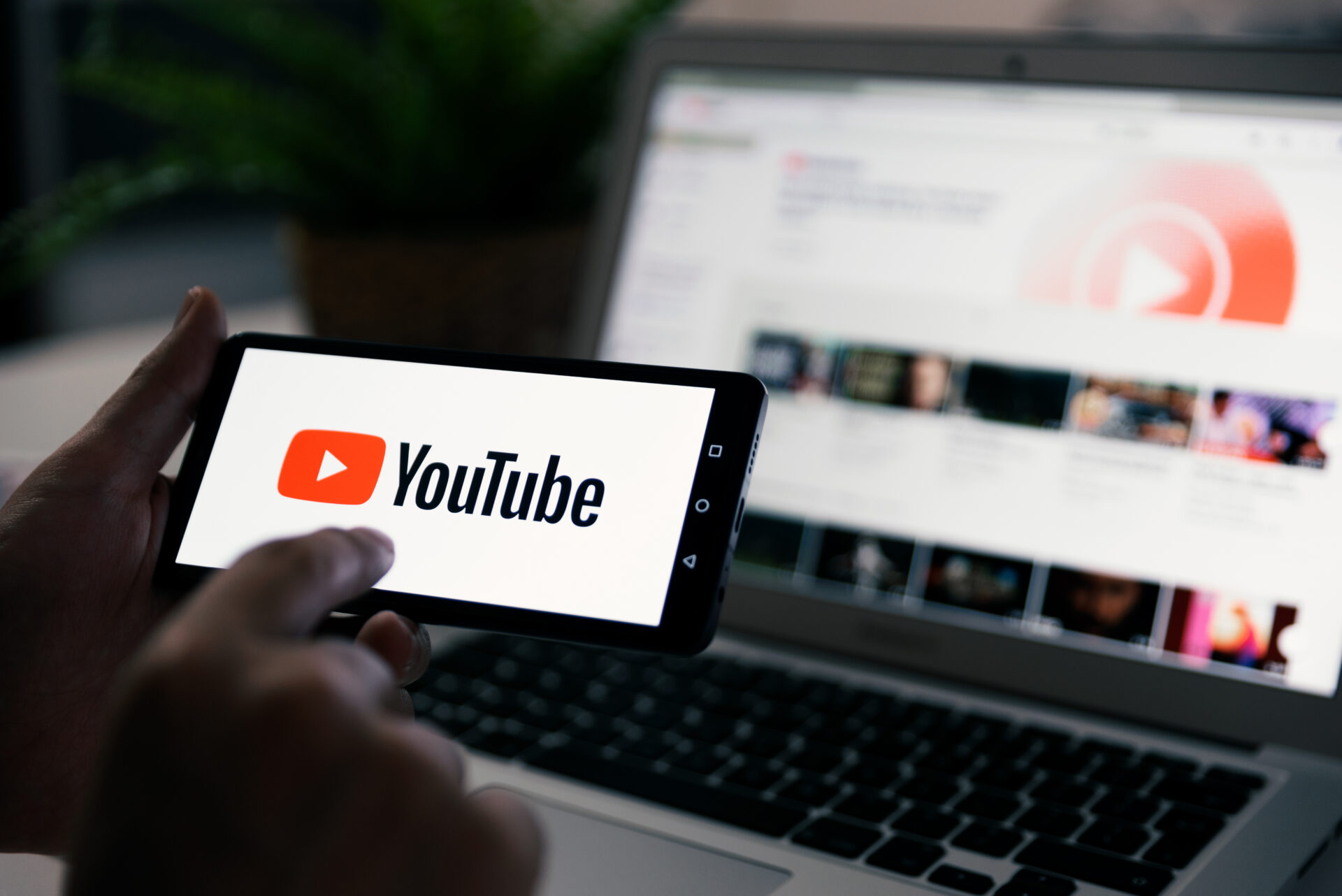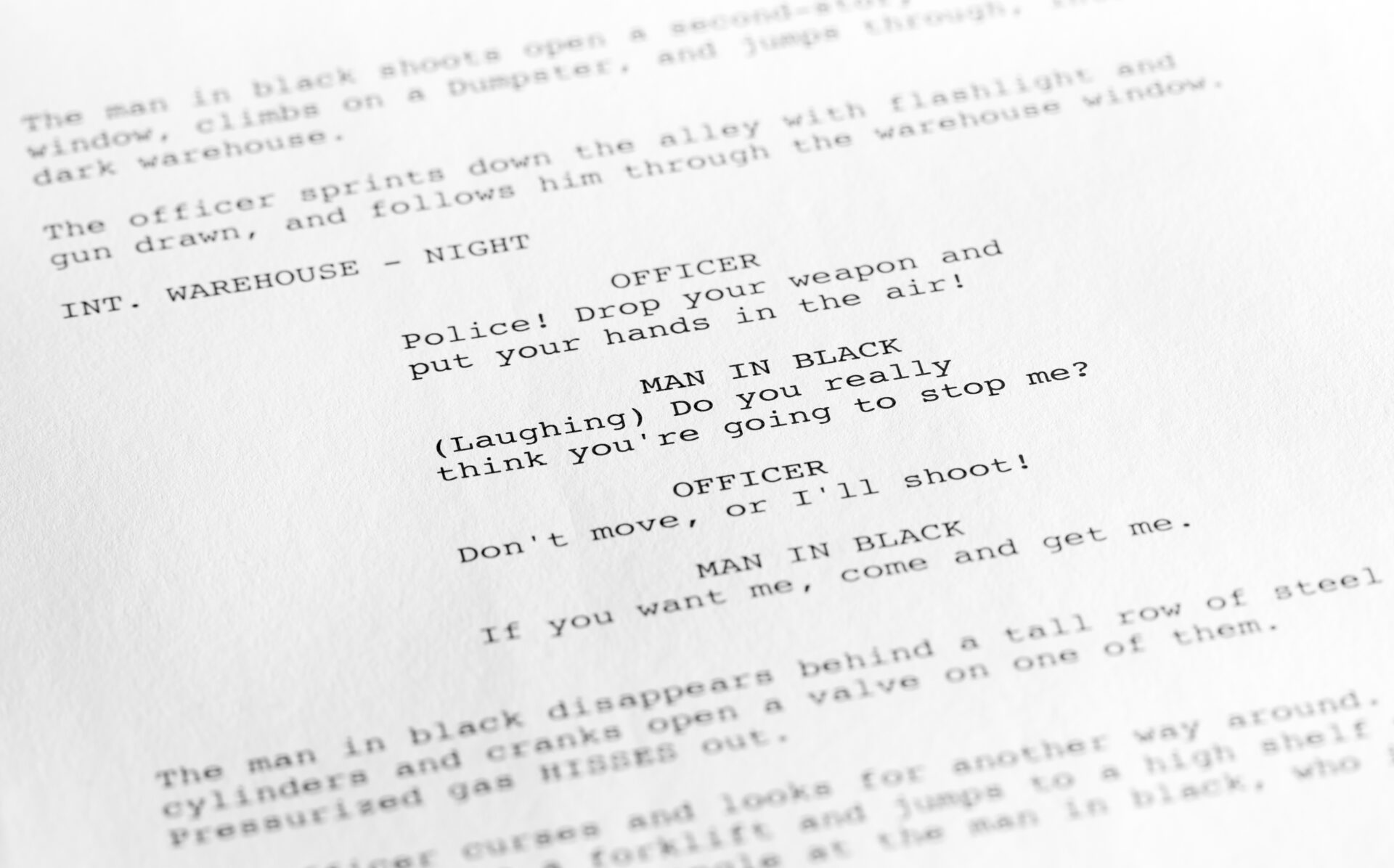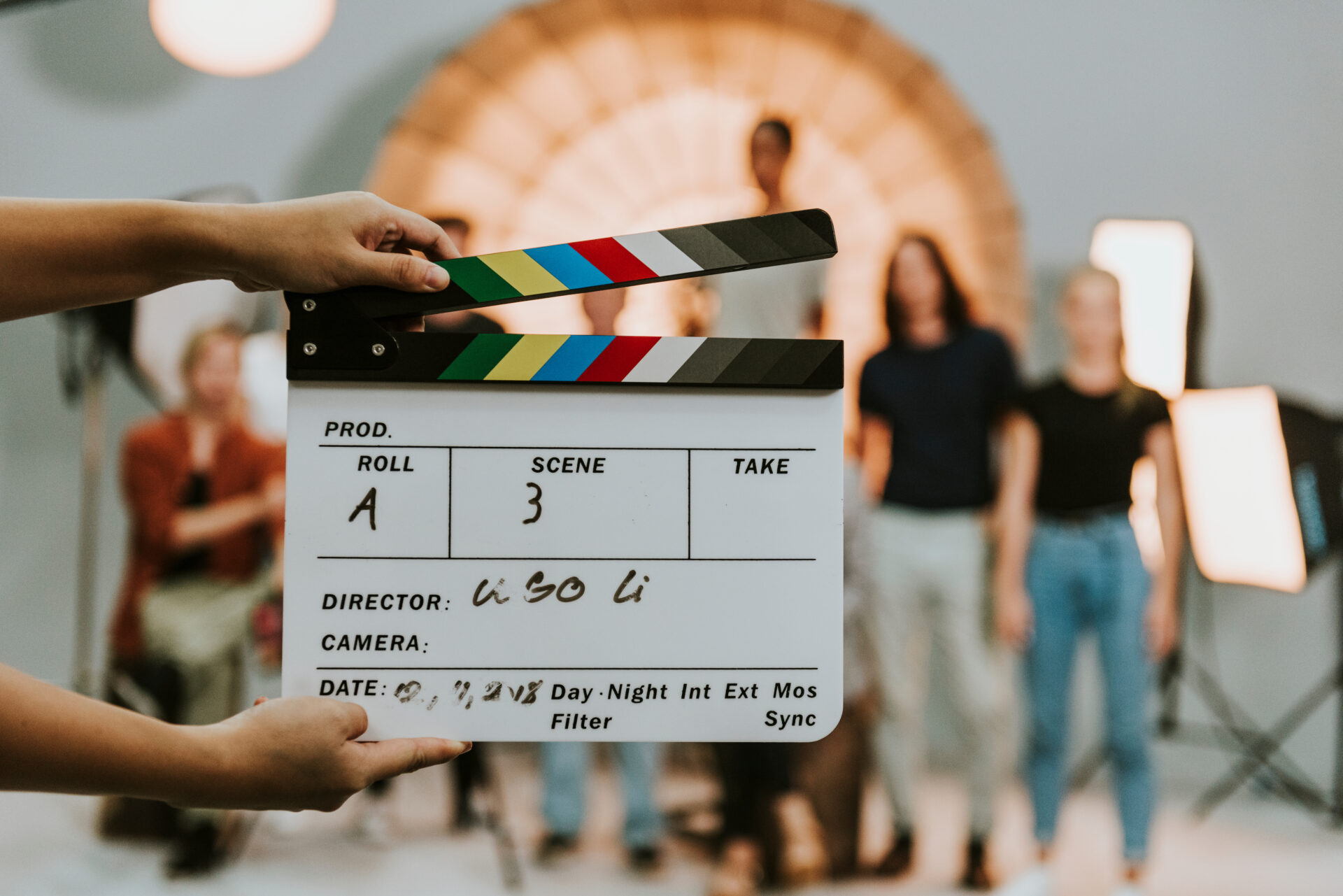
Think about your favorite brands.
Now, think about how many of them you encounter primarily through video content – be it a TV commercial, an in-stream ad on YouTube, a Reel on Instagram, or a sizzle reel embedded on their homepage.
Most of them, right?
There’s a reason for that, and it’s exactly three words long: video marketing works.
Think about the videos you’ve seen from your favorite brands:
- Did they successfully encourage you to buy a product or service?
- Did they improve your overall impression of the brand?
- Did they make you feel more confident in the company’s products or services?
- Do you remember them?
Generally speaking, one of two things is true: you either answered “yes” to at least one of those questions, or we’re in an alternate universe.
By any metric, video is a highly effective product that has a place in almost any marketing strategy. In this Definitive Guide, we’ll take a deep dive into how your business can leverage video marketing to engage your audience, build consumer confidence, drive more traffic, encourage more conversions, and meet almost any other marketing goal you set.
Ready? Then let’s roll cameras!
Just How Effective Is Video Marketing?
Video is almost entirely unique among marketing practices. Today’s consumers don’t just tolerate marketing videos; they don’t just expect to see marketing videos; they want to see your company’s video content.
Wait, did you read that correctly? You sure did. 89% of consumers report that they actively want to see more video content from their favorite brands. And if “giving the audience what they want” isn’t a strong enough reason to start breaking out the lights and cameras, try these other statistics on for size:
- 82% of consumers say that a video has convinced them to buy a product or service
- 87% of consumers say that the quality of a company’s video content affects their trust in the brand
- 90% of marketers report an “excellent” ROI from their video marketing efforts
But another surefire way to convince yourself of video’s impact is to follow the money: fully 91% of marketers report using video in their marketing campaigns. If 91% of an entire industry is willing to spend money on something, the odds are pretty good that it’s working.
Are There Any Other Reasons to Use Video Marketing?
You need more than that? Okay, here you go:
Video Builds Engagement
Nothing works quite as well as video when it comes to engaging with an audience. Social posts featuring a video see an engagement rate more than 300% higher than posts with text alone.
Video Is Flexible
There is almost no marketing campaign that isn’t improved through the addition of video. Whether you’re promoting a new product or just connecting your audience with your company’s human side, there’s a video solution for it.
Video Is Multipurpose
The video that was shot for your television ad can be reused for an explainer, a company overview, and even more. Very few types of content can be repurposed as effectively as video footage.
Video Is Expected
Most of all, video is now an expected part of every company’s marketing mix. Your audience doesn’t just watch your videos; they engage with them at a deep level – and they want to see more of them!

Start on the Right Foot: Your Video Marketing Strategy
So, we’ve convinced you that it’s time to leverage video marketing. You’ve got your first script jotted down on a napkin, you’ve borrowed your neighbor’s HD camera, and you’re ready to start rolling!
We love the enthusiasm but hold on just a minute. Before you start filming, you’ll need a strategy.
Getting Started by (You Guessed It) Setting Goals
“Are you going to talk about SMART goals now?” we hear you ask, expectantly.
We absolutely are! And there’s a good reason this keeps coming up in our Definitive Guides. We’ve done a lot of marketing—like, a lot. In more than 15 years, we’ve worked with hundreds of clients and produced thousands of pieces of marketing collateral. Most have been successful. Some haven’t. And there are a million-and-one reasons a marketing piece might fall flat when it’s presented to an audience.
But one thing has remained constant for every client we’ve worked with and every marketing piece we’ve made: if a specific goal wasn’t being targeted, the marketing piece failed—100% of the time, no exceptions.
It is absolutely, positively, no-questions-asked impossible to build an effective marketing piece if you don’t know the intended result.

As we said, we’ve written extensively about SMART goals. If you want to learn more about setting specific, measurable, attainable, relevant, and timely goals, visit this section of our Definitive Guide to Creating a Marketing Plan and learn everything you ever wanted about setting SMART, actionable goals.
In short, though, you need to make sure that the goals you set for your video marketing efforts should be:
- As specific as possible – for example, a SMART goal is not just to increase sales but to increase sales of a particular product line or at a specific location.
- Measurable via some definite metric – if you can’t measure your progress (total sales volume, profit per quarter, visits to the website, etc.), you can’t track your progress.
- Attainable by your company – avoid pie-in-the-sky goals that aren’t even remotely feasible. They’re disheartening for you and your team.
- Relevant to your overall goals – if your overarching goal for the year is to increase sales of Product A, there’s little reason to create new videos promoting Product B.
- Timely and time-bound – your goals should always come with a deadline: We will increase sales of Product A by 10% by the end of the year. Having a specific time period attached to your goal helps instill urgency in your team and gives you a definite point for assessment and reevaluation.
Once you have set out your goals for your video marketing efforts, you can start looking into which types of videos are most likely to help you attain those goals.
Ready to Get Started Using Video, But Not Quite Sure Where to Start?
M&R Marketing Has Your Back: XXX-XXX-XXXX
Ready to Get Started Using Video, But Not Quite Sure Where to Start?
M&R Marketing Has Your Back: 478-818-6319
A Smorgasbord of Video Types
When it comes to using video to meet your marketing goals, there are many options to choose from. Some of the most popular types of video that we produce at M&R are included below, and this is by no means an exhaustive list of what’s out there:
- Commercials
- Animated or live-action explainers
- Company overviews
- Reels and social videos
- Testimonials
Each different type of video serves a different marketing goal. So, using a combination of various video and video campaign types can be a compelling addition to your marketing mix. In fact, there’s hardly a business out there that can’t profit from using every single type of video to support different parts of a broader marketing campaign.
For this Definitive Guide, let’s say you are the owner and operator of ChillingCo, a heating-and-air specialist company operating in a broad area across Central and South Georgia. With offices in Albany, Cordele, and Cochran, you specialize in providing high-efficiency cooling systems for residential customers in a part of the country that experiences blisteringly hot summers.
Your primary value proposition is your quick service. During the summer months, when most residential air conditioners in the Southeast are most likely to break down, you have a large enough team of repair technicians to guarantee a 24-hour response time for callers with a broken AC.
Your other primary selling point is your proficiency with alternative cooling systems, such as geothermal heat pumps. Your more affluent customers appreciate your ability to provide them with systems that reduce their carbon footprint and monthly energy expenditures at the cost of higher initial setup expenses.
Your brand voice is generally laid-back and approachable but still highly competent and professional.
Do you have a need for every single type of marketing video?
You bet your Freon you do.
Commercials: 30 Seconds to Success
This one is a no-brainer. Whether they’re running on local TV or as skippable in-stream ads on YouTube, 15- or 30-second commercials are what most people think of when they think of video marketing.
Your commercials should focus on one or two value props and drive those points home with your audience. For ChillingCo, you could easily run two concurrent ad campaigns—one focusing on your quick-response air conditioning repair and the other on your alternative cooling products and services.
Your commercials can draw elements from every other type of marketing video – they can contain testimonials, (briefly) explain a concept or otherwise educate your audience, serve as an abbreviated company overview, or even bring in user-generated content to build engagement. The voice can be humorous, emotional, formal, casual, or almost anything else, so long as it fits your brand voice.
However you choose to demonstrate your value props, your commercials must be:
- Concise – 30 seconds is not much time. Fifteen seconds is even less. Forget the exposition and cut to the chase.
- Approachable – Most of your audience is going to tune out at the first mention of industry-specific jargon, detailed technical information, or anything else that forces them to do too much thinking. The KISS* principle applies very much to this case.
- Action-focused—The best commercials contain calls to action. Even if this specific commercial is designed to build brand awareness, adding a “visit us on social media” mention is a call to action in and of itself.
*Keep It Simple, Superstar
Example of a commercial:
Explainers: An Educated Consumer Is a Good Consumer
What in the world is a geothermal heat pump? (We didn’t know either, so we looked it up.) Apparently, it’s an alternative heating and cooling system that uses the Earth itself as a source of heat during cold months and a place to dump excess heat during hot months. They’re expensive to install but provide incredible efficiency and significantly reduce a building’s carbon footprint. Cool, huh?
If we didn’t know that, should you expect your audience to know it? Of course not. And people making big-ticket purchases like new HVAC systems for their homes are often understandably hesitant about buying something they don’t understand.
Here’s where a short, 1-2 minute animated video explaining how a geothermal heat pump works can directly impact your sales. Educated customers are more confident customers, and when you’re the one doing the educating, you can stress your value propositions.
Even better, these videos do double duty by positioning you as a subject matter expert, which improves your business’s authority online and your search engine performance, which leads to more traffic for your website.
The more complex your subject matter, the more different explainers you can leverage to help educate your audience. For ChillingCo, more explainers could include:
- How a standard (air-side) heat pump works
- Why geothermal heat pumps are more efficient than traditional AC systems
- Why it’s essential to change your air filter each month
- The advantages of different types of air filters
- What an annual maintenance visit includes
- How to set up scheduling on a smart thermostat
There are also about a million other videos that can help your customers better understand your products, services, and unique value propositions.
Example of an explainer video:
Company Overview: Let the World Know What You Do
What makes ChillingCo unique? Who are the people who provide the services your customers receive? Why do you do what you do? What’s your service philosophy?
A company overview video can focus on the answers to these questions and thousands of others. The goal of this type of 2-5 minute video is to provide your audience with a slightly more detailed, behind-the-scenes look at your company. These videos build engagement, improve consumer confidence, and even do a great job explaining the kinds of value props that can’t be easily addressed in a 30-second ad.
Company overviews are some of the most powerful branding tools available. You can:
- Dive into your company’s mission, vision, and values in an engaging, accessible way
- Give some historical background to show your company’s expertise and longevity
- Introduce your company’s leadership to build trust with your audience
- Briefly explain your different product or service lines
- Include any other elements that help your audience gain a better understanding of what you do and how and why you do it
Example of a company overview:
Reels and Social Videos: Engagement With a Short Turnaround
The odds are pretty good that you’ve watched a Facebook or Instagram Reel or other video on social media within the last week. The odds are halfway decent that you’re actually watching reels or social videos on your phone while you’re reading this article. (If that’s the case, please put your phone down and pay attention. This is important stuff.)
Reels are kind of like the Lay’s potato chips of the online content world: betcha can’t watch just one. Many people today spend as much time, if not more, watching dozens of short reels back-to-back than they do watching long-form programming like TV shows and movies.
Their low-production look and feel, informal nature, short length, often humorous content, and always authentic vibe make them not only quick and easy to produce but also staggeringly effective. These short, easily digestible videos can help meet just about any business goal, but the vast majority of commercial reels are posted with one specific goal in mind: audience engagement.
As such, reels aren’t heavily produced. Most are shot on smartphones, there’s minimal editing, and the effects are limited to whatever filters and titles are available in CapCut or similar phone-based editing apps. These low-production methods lend these videos a highly authentic feel, so let them be authentic! Reels are the place to unwind and let your audience see the people and personalities behind your business.
For ChillingCo, a handful of reel ideas might include things like:
- Shots of service trucks heading out at the start of the day, over audio from “Transformers” of Optimus Prime giving his famous “Autobots, Roll Out!” command.
- Service technicians doing an impromptu dance to the tune of “Cold as Ice” by Foreigner or “Cool it Now” by New Edition (or even a song recorded after 1984).
- Your sales team taking on the latest internet challenge in the company break room.
- A team member showing off a unique talent or special skill, even if it’s unrelated to air conditioning.
As you can see from these ideas, the concept behind engagement-driven reels isn’t to promote your products or services or educate your audience. Instead, your reels should be eye-catching, engaging, entertaining, and present your company as a human enterprise run by real people.
Why is that important? Well, for starters, engaged customers are eager customers. People aren’t fond of giving their money to faceless corporate enterprises, and engagement reels are a great way to show your company’s “face.”
Increasing engagement on the social media platforms where reels are shared translates into higher visibility for both your social media ads and other social posts, improving the effectiveness of your overall social campaign.
And at the end of the day, reels are just fun to make and share. Your team is made up of people who have unique abilities and interests beyond what they do every day in exchange for their paycheck. Letting them unwind, show off their other talents, be funny or goofy, and just be themselves for a few minutes isn’t just good for your business; it’s good for your employees. (And you never know – the next viral video craze may be sitting just down the hall from you at this moment!)
Testimonials: Let Others Tell Your Story
We’re speaking from experience when we say that anyone who can get our air conditioning back up and running when it’s 103 degrees outside with 99% relative humidity will get a good testimonial from us. Ergo, ChillingCo should have a massive stable of past customers ready to sing their praises to any who’ll listen.
Testimonials are some of the most powerful social proof available to marketers, and there’s no testimonial more effective than footage of a happy customer raving about your exceptional products and services.
Testimonial video footage is widely used in commercials, but standalone testimonials can be even more powerful. When you produce a testimonial video for use on your website, social platforms, or in a digital ad campaign, you’re not bound by the 30-second time cap imposed on commercials.
Instead, these longer-form testimonials can be 2-4 minutes long and really allow your customers to do a more thorough job explaining why they chose your company’s products or services, how you exceeded their expectations, and why they’d choose you again over your competitors.
Example of a testimonial:
We Know How to Captivate Your Audience With Any Type of Video.
M&R Marketing Can Make Video Work for You: 478-818-6319
Where Can I Use My Videos: Selecting a Video Platform
Before the advent of the internet, there was really only one place most businesses could use video marketing—television. Now, however, there are almost limitless options for putting your video marketing efforts in front of your audiences.
As you develop your strategy and decide which types of videos will best serve each of your goals, you should also consider where to use those videos for maximum impact.
Remember, too, that video shouldn’t be your only marketing tool. Instead, it should fit into an overall marketing mix, a combination of tactics and tools that work together to help move people through your sales funnel. If your end goal is to drive more traffic to your website, TV ads with your URL displayed on the screen are fine, but clickable in-stream ads on a platform like YouTube make it even easier for your audience to take one action and land where you want them to.
Why Do I Need to Consider the Platform?
There’s a temptation to make a video and then post it everywhere – on your website, your social media platforms, as in-stream ads on YouTube, and anywhere else you can think of. In a few cases, that’s perfectly fine.
Most of the time, though, you’ll want to match your video’s tone and content to the platform. That doesn’t necessarily mean you need to shoot entirely new footage for every platform. Sometimes, changing out the call to action or making slightly different editing choices is enough to turn a TV ad into a social media video.
By laying out a solid strategy and knowing where you’re going to use each piece of your video marketing content, you can go into each production with an overall picture of what you’ll need. While you’re getting footage for your YouTube ad, you can grab b-roll to use in your explainer videos and interviews for your company overview, for instance.
Combining video shoots and building a content library that serves multiple projects will save you an enormous amount of time, money, and hassle.
Video Marketing Platforms
Broadcast Television
TV is still a great place to advertise, particularly for local businesses. No matter how prevalent the internet becomes, millions of people still sit down in the evenings to watch a few hours of cable or broadcast television.
Broadcast TV’s primary advantage is its reach. For products and services aimed at an older demographic, comprising people who may not spend as much (or any) of their lives online, TV may be the only way to get effective penetration into your audience.
High cost and limited flexibility are the two main drawbacks of TV advertising. Airtime costs considerably more than digital platforms, so your advertising dollar won’t go quite as far, and you’ll have to pay for exposure, even if the ad is ineffective. You’re also limited to precisely one type of video: commercials.
The TV audience isn’t targeted, so you’ll need to have an ad that speaks directly to your specific audiences while still being approachable to others. TV ads are fleeting – when they’re over, they’re over – and tend only to be seen once during a particular program. TV commercials should have clear, easy calls to action – call now, visit our website, come to our store, etc.
Streaming Television

The advent and stratospheric rise of streaming services has opened up an entirely new avenue for video marketing: over-the-top (OTT) advertising. These video ads, usually also limited to 15-, 30-, or 60-second commercials, run on streaming services such as Hulu, Disney+, Apple TV, and dozens of others.
OTT advertising offers many of the same advantages as traditional broadcast advertising – mainly, its incredibly wide reach – and pairs them with the hyper-specific audience targeting abilities offered by YouTube and social media platforms.
Your Website
It costs next to nothing to embed video content on your website. A website that features original, compelling, and informative video content gains immense value in terms of providing a high-quality user experience that keeps users engaged.
Posting video content on your website has several advantages, one of the most important being that video improves the user experience (and SEO!) for your site. Your website is entirely flexible, so there’s no limit to how many and what types of videos you can use. Posting videos on your site is also the lowest-cost means of putting your video in front of your audience.
The main disadvantage to video on your site isn’t really a disadvantage; it’s just something to be aware of: the people visiting your site are already on your site. So, as you’re working through your strategy, remember that your site is not the place to post a lot of brand awareness-focused videos; this audience is already aware of your brand.
So, what kinds of videos can go on your website? Anything goes. You can create video content that enhances every single page of your site – a company overview for your About page, an explainer on each service page, and a testimonial for every product. Keep in mind, though, that the videos on your site should be positioned to help move your users through the sales funnel through consumer education, social proof, and direct sales appeals.
YouTube
YouTube remains the hands-down top video-sharing site in the world. There are two paths to publishing your video marketing content on YouTube:
- Posted videos—Posting a video on YouTube is free, but you must make an effort to actively drive traffic to your content through other means until your content becomes popular enough to begin showing up in users’ recommendations.
- In-stream ads—Skippable in-stream ads are a cost-effective way to put your content in front of a highly targeted audience that has a need or affinity for your products and services.
Just posting your content on YouTube is the less expensive option, but it may not be your best choice. By using your video content as in-stream skippable ads, you gain a number of advantages:
Audience Targeting
Just like other digital marketing strategies, YouTube advertising can be laser-targeted at a specific audience or even a particular buyer persona. Does your video best speak to young homeowners who drive compact cars and listen to classic rock? You can target that exact audience and not spend money advertising to older pickup drivers who listen to country and live in an apartment.
Skippability
As their name implies, skippable in-stream ads are skippable. “But wait,” you say. “I don’t want people to skip my ads!” Sure you do. Skippable ads provide two main benefits. The first is that, whether you like it or not, your ad is interrupting the content that users are trying to watch. By choosing skippable ads, you’re giving people who aren’t interested in your products an easy opt-out, preventing them from getting a bad taste in their mouth when your company’s content is what’s keeping them from watching the funny cat videos they logged on to see. The second benefit is…
You Only Pay for People Who Watch
YouTube ads are billed on the basis of how many users watch your videos for at least a certain amount of time (usually 15 seconds). If someone skips your ad before it hits the 15-second mark, you don’t pay. So, instead of spending money to advertise to someone who’s already found the solution to their problem, you only pay for audience members who are engaged enough to watch past the first few seconds.
Integration With Other Google Marketing
Again, your video content should only be one part of an overall marketing mix. If you’re already using other Google marketing tools, like search ads, display ads, or shopping ads, your YouTube ads can integrate directly into your other marketing efforts. Your videos can steer viewers to your landing pages, drive them directly to product listings on your eCommerce site, or – with a few settings – even allow users to buy directly from the video without ever leaving YouTube!
What kinds of videos can you use on YouTube? Much like your website, anything goes. In fact, many companies use their YouTube accounts as free repositories for all of their video content, regardless of what platform it was initially intended for. If you’re posting your videos on your account for people to watch at their leisure, there’s not even an actual limit to how long your videos can be. (There is, but you probably won’t be doing many marketing videos that are more than 12 hours long. In fact, you extra-super-duper should not have any marketing videos even close to 12 hours long.)
For skippable in-stream ads, though, you’ll want to keep things short and sweet. Your ads can be commercials, testimonials, overviews, explainers, or any one of dozens of other video styles – but you should keep them around two minutes or less. Anything longer will feel like an imposition on your audience’s time.

Social Media Platforms
Social media is the last set of platforms we’ll look at for your video marketing, and it’s one of the best – especially for engagement-focused content and short-form (60 seconds or less) videos of other types. Those great funny, touching, or off-the-wall reels your team has helped you come up with? Those go on social media.
Social media is also an excellent place for commercials, especially short, grabby commercials that have a big, splashy intro that will catch viewers’ eyes and get them to stop scrolling for a second.
Like YouTube ads, your social media videos can integrate into your digital marketing efforts, pushing traffic to landing pages or your website. Engagement videos can encourage users to like or follow your account. Whatever the end goal is, your social media videos need to be short, punchy, and be able to grab someone’s eyes for a few seconds without letting go.
Which platform should I use? That depends on your video:
Facebook has a slightly older user base, and your videos have to stand out in a never-ending feed of posts, photos, other videos, and clickbait articles.
Instagram and TikTok have younger user bases and rely exclusively on photo/video content. Direct advertising is more complicated on these platforms (when it’s permitted at all), but ads fit more seamlessly into the browsing experience.
LinkedIn is not the place for your funny engagement reels. The platform’s audience uses it for professional networking and development, so your video content should focus on company overviews, testimonials, and explainers.
Building Your Overall Video Strategy
By now, you should be well on your way to a robust video strategy. While your strategy can take any form – from a bunch of notes scribbled on a legal pad to a highly detailed set of documents, complete with footnotes and cross-referencing – the most usual is a primary document that outlines each of your goals and provides some basic information about the video(s) you’ll be using to meet that goal. For our example company, ChillingCo, their video strategy for the coming year might look something like this:
| Goal | Video Type | Video Content |
| Increase sales of geothermal heat pumps by 5% before August. | Explainer | Animated video explaining how GTHPs work and how they reduce carbon footprint |
| Increase sales of geothermal heat pumps by 5% before August. | Commercial | 30-second spot for TV and YouTube promoting GTHP discount for qualified buyers |
| Boost summer service calls by 7% before October. | Commercial | 30- and 15-second spots for TV, YouTube, and socials promoting 24-hour repair service |
| Boost summer service calls by 7% before October. | Testimonial | 3 videos, each about 1 minute, of satisfied customers explaining how we brought their air back online in less than 24 hours |
| Boost summer service calls by 7% before October. | Social videos | 3-4 short humorous reels featuring our sales team talking about the heat and mentioning our 24-hour service |
| Boost summer service calls by 7% before October. | Commercial | If goal is not on track by late July, launch two additional ads (15 and 30 second) offering a discount for repair services |
Again, these are just a few examples of how video projects can be tailored to address specific business goals and how multiple videos can be used to build towards a single goal.
Now that you have a general overview of what you’re going to do and why you’re doing it, it’s time to decide how.
Shooting Video Yourself vs. Hiring a Pro
This decision is one of the first and biggest you’ll have to make. Do you handle production internally or hire out your video to a professional production company? The answer will depend on several different factors:
What Type of Video Is It?
If you’re working on a commercial that will be placed on local television, your production requirements will be very different from those for a social media reel. While a reel can actually benefit from a stripped-down, highly authentic amateur production quality, TV commercials have very specific video and audio quality requirements.
How Much Production Work Is Needed?
Suppose you’re thinking about a testimonial video with one interview subject, a few b-roll shots, and a title card at the end with your website and phone number. In that case, the production probably won’t require much planning or in-depth organization. If you’re shooting a company overview that involves multiple interviews, aerial footage of your facility, numerous titles, animations, and highly stylized action shots of your team at work, you’re looking at a massive undertaking with a lot of moving parts.

How Skilled Is Your Team?
It’s time for some honest self-reflection. While social reels don’t require much more technical skill than hitting “record” on a smartphone, most other video productions require a production team with more specialized expertise. Do you have a team capable of producing a high-quality video product? Just because your VP of Marketing owns an incredible camera, lighting rig, and professional microphones does not mean they know how to use them.
Do You Require Outside Talent?
Professional video production teams don’t just provide the technical skill and creative mindset to produce quality video. They also have access to actors, voiceover performers, and other talent that can help tell your story more effectively. If you’re making a commercial or other video that requires you to bring in on-screen or voiceover talent, it may be easier to let a professional production company help.
What’s Your Budget?
This consideration may be last on our list, but it’s hardly the least important. Hiring a professional production team can be expensive, so your budget for a particular video will go a long way toward helping you decide whether to produce in-house or externally. But keep in mind that saving money on the front end by doing the work yourself may end up costing you more in the long run if the final product is a low-quality video marketing piece.
Once you have answers to all of these questions, you can decide whether it will be better to handle your production yourself or hire professionals.
If you choose to bring in a dedicated production team or rely on your trusted marketing partners to handle production for you, then congratulations! They’ll be able to take it from here: working with you to develop your videos’ concepts, write scripts, develop shot sheets, schedule production days, and perform the magic of post-production.
For most companies, hiring out production is always the best idea. Creating quality video is a complex task, and it has many moving parts. Just trying to coordinate everything for a short, simple, 15-second commercial can involve days or even weeks of work—time you should be spending growing your business and serving your customers.
(Don’t stop reading, though – even with a production or marketing firm handling the actual production work, your end product will be so much better if you have a good understanding of what goes into building a video piece.)
If you’ve decided to tackle this project on your own, there’s a lot more work to be done. It’s time for pre-production.
Need Help Bringing Your Video Strategy to Life?
M&R Marketing Turns Vision Into Reality: 478-818-6319
Putting Your Vision on Paper: Pre-Production
In this stage, you’ll be deciding what each video is going to say. In other words, you’ll determine what story each piece will tell.
After all, the best video marketing pieces tell a story:
- The story of how ChillingCo’s 24-hour repair service made a homeowner’s life more tolerable
- The story of how ChillingCo’s leadership came together to start a company dedicated to fast repairs
- The story of how a geothermal cooling system can save electricity and reduce harmful emissions
People are naturally drawn to stories. Long before there were marketers, videos, or even products to sell, there were storytellers. There’s something intrinsically right about conveying information in the form of a story; the various narrative structures we use in our daily lives have been built over millennia and adapted to speak to every aspect of the human condition.
So, while your strategy may describe the video piece as an “Animated video explaining how GTHPs work and how they reduce carbon footprint,” you’ll now turn that vague description into a story.
Just like any other story, your marketing video will have “beats” that advance the narrative. An easy way to understand “beats” is to look at a TV show or movie you love. What are the vital moments, the points in the story that drive the narrative forward? Those are the beats.
For example, the first few “beats” in the movie Jaws are pretty easy to sketch out:
- Amity Island is a sleepy New England beach town preparing for its upcoming summer tourist season.
- A young woman is killed in the water by some unknown trauma; the Chief of Police wants to close the beaches until the cause of death can be determined.
- The mayor and other business owners react to the beach closure and see their vital tourist dollars escaping.
- A shark expert arrives and determines that a giant man-eating shark was responsible for the woman’s death.
What’s not included in the list of beats is the humorous exchange between the Chief and his wife about the locals’ thick New England accents or a description of the long establishing shot of the beach party from which the young woman disappears. Your story’s beats are just the framework on which the story itself will hang, an outline of the story itself.
So, for your explainer video about geothermal heat pumps, your story beats might be something like:
- Traditional heat pumps rely on energy-expensive evaporative cooling, which is a century-old technology.
- Energy costs and environmental concerns about the atmosphere increase daily.
- Homeowners who want to save energy or choose a more sustainable option want a solution other than the traditional heat pump.
- ChillingCo offers homeowners the option of a geothermal heat pump (GTHP) that delivers more efficient operation and uses more eco-friendly thermal media.
- GTHPs use liquid thermal media instead of gaseous refrigerants.
- GTHPs use the Earth itself as a heat dump in the summer and heat source in the winter, putting less heat into the atmosphere and helping reduce climate impact.
That’s the frame of the story to tell in your commercial. Now that you have the bones, it’s time to decide what the rest of the story will look like and the tone you’ll use to convey it.
Here are some ideas for further fleshing out your ideas:
Keep Your Marketing Videos Short
People are busy, and their time is valuable to them. When you put a video in front of them, you ask them to give you their mostly undivided attention for however long your video runs. Even asking for thirty seconds can feel like a tall order. Keeping someone’s eyes on the screen for a full minute is even more challenging. And asking for three minutes? You might as well ask them to give up an entire Saturday, especially since clicking away from a video is incredibly easy!
People’s attention spans are short, and regardless of how good your video is, you’re more likely to lose viewers the longer it goes on. So, make sure that your videos don’t drag on. Make your point quickly and succinctly, and let your audience move on to the next thing—hopefully, a visit to your site to complete a purchase.
Make Your Marketing Videos Funny
Think of your five favorite TV commercials. Now, think about your five favorite online videos. How many of those ten videos are humorous?
Humor is a powerful sales tool. When your marketing videos are funny, they’re more engaging, memorable, and more likely to get shared around as a social phenomenon, providing you with all kinds of free publicity.

Just remember that humor can cut both ways. Pay special attention to your audiences when crafting a funny video for marketing purposes. Humor in marketing can easily be taken the wrong way if it’s not done carefully. Make sure to think about how your jokes may play in front of different audience members and then how they will play in front of people who might not be in your target audience. When in doubt, leave it out.
Humorous video content also requires careful and honest evaluation. What’s funny to you may be less funny to someone else – not necessarily offensive or troubling, just not funny. Test your content on various people before you go into production. If reading the content on the page makes them laugh, you can bet the video will, too.
Make Your Marketing Videos Touching
Emotion can be another great marketing tool. Those heartwarming videos that make people go “Awww” are incredibly engaging. People like it when a company makes them feel good, and a healthy dose of sentimentality can go a long way toward achieving the desired effect.
Again, though, there’s a caveat for swinging this particular club: it has to be genuine. People can sense fake sentiment a mile away, and a company that fails at making an authentic emotional appeal will be subject to ridicule and worse. In other words, don’t force it. Let the story deliver the emotional payload. You don’t have to hit your audience over the head with it – if you tell the story well, the emotions will follow.
Another note on touching and heartwarming videos – the temptation to rely on small children and furry pets may be substantial. Again, those only work if they’re genuine and not awkwardly trying to shoehorn “cute” into something that shouldn’t be “cute.”
And Always: Make Your Marketing Videos Beautiful
No matter the tone of your content, nobody wants to watch a marketing video featuring one of your employees standing still in front of a dull white wall, talking about your products. One compelling part of video marketing is that it can take the audience on a journey to new and exciting places. Show your audience what the good life looks like once they’ve purchased your products or services.
Your visuals are a massive part of what makes your ads compelling, so make sure they’re appealing. When possible, spend the extra money for a professional videographer and editor – they’ll know how to get the most appeal out of your offerings, use lighting to its best effect, catch the best angles, and combine it into a unified, compelling narrative.
And if your products aren’t necessarily attractive (does anyone like how an air conditioning unit or lawnmower looks?), don’t dwell on it. Focus instead on outcomes, people enjoying their cool, comfortable homes and lush, freshly mowed lawns.
Scripting and Storyboarding Your Videos
Okay, so you know what goal your video is working towards, you know what general content it will contain, you’ve sketched out the essential plot points, and you know what tone you’re going to take.
Now it’s time to get down to the nittiest of the gritty – actually writing a script or other document that you can use during production to ensure that you’re getting the footage and content you need. These can take dozens of different forms, and we won’t bore you with endless descriptions of the various formatting options for scripts or storyboards. At this point, you’re most interested in making sure your story is fully fleshed out and that you or the production team you bring on board knows what the end product should look like, more or less.
For this purpose, we’ll break down marketing videos into two types: scripted and unscripted.

Scripted Videos
Commercials, explainers, and company overviews are typically scripted. Before anyone ever picks up a camera, you know exactly what will be said, by whom, what they’ll be doing when they say it, and what other footage might be playing while they’re speaking.
Start with your plot beats and imagine how to communicate those plot points in the style you’ve chosen. For this example, ChillingCo, being a somewhat chill company, wants a slightly humorous tone for the geothermal heat pump explainer video that we plotted above. They envision an animated video with a single voiceover narrator.
The script for the first few moments of their video might go something like this:
| Beat | Dialogue |
| Traditional heat pumps rely on energy-expensive evaporative cooling, which is a century-old technology. | Traditional heat pumps can be… not good. Evaporative cooling is great, and it’s been keeping us all cool for years and years, but it’s last year’s news. |
| Energy costs and environmental concerns about the atmosphere increase daily. | After all, it’s 2024 – why are we still using compressors that burn hundreds of dollars worth of electricity every month? Why are we still relying on refrigerants that burn literal holes in our atmosphere? Yeah, we don’t know why, either. |
| Homeowners who want to save energy or choose a more sustainable option want a solution other than the traditional heat pump. | So, how do you stay cool in summer if you want to save money, reduce your environmental impact, and can’t afford to spend every waking moment inside a bathtub full of ice? |
From there, the story goes on.
Unscripted Videos
Testimonials, social reels, and other interview-heavy videos typically don’t rely on a specific script but have an outline of what the main content points are and who should convey them. For a testimonial video featuring two ChillingCo customers (Alice and Bob), the “script” may look more like this:
- Alice discusses how her air conditioner quit in the middle of a 102-degree day (5-10 seconds)
- Bob shares how a neighbor accidentally backed into his heat pump, causing it to fail early one Saturday morning (5-10 seconds)
- Alice talks about how she called ChillingCo and got an immediate response (10-15 seconds – ensure Alice says something like “I was amazed to get a call back that quickly”)
- Bob talks about how he called dozens of HVAC shops before finding ChillingCo open on a Saturday (10 seconds – make sure Bob says something like, “I spent most of the morning sweating, afraid I’d be stuck without AC all weekend.”)…
An interview script should outline the general gist of what the subjects need to say without specifying the exact words they should use. It should also specify any particular beats that the subjects need to spell out in order for the story to work and how long each chunk of “dialogue” should be in the completed video.
Letting Imagery Tell the Story
One thing to remember is that the video playing during the dialogue can play a big part in the storytelling.
If one of the core concepts of your commercial is that it’s hot outside, you don’t have to have a character say to another character, “Gee, it’s hot out here!” Instead, let the visuals do that for you – dress your characters in shorts and tank tops, portray them as sweating, cut away to a dog panting in the heat, or show an image of someone chugging an enormous glass of iced lemonade.
Trust your audience to understand your visuals.
Check Your Run Time
No matter whether your story is scripted or unscripted, remember to watch the length. Spoken language moves much slower than written language—in the same time it takes us to read one page of dialogue out loud, we can read two to three pages of written content.
So, as you write, read your script out loud to yourself and use your phone’s stopwatch app to time the dialogue. And don’t rush it. If you’re out of breath after reading your 30-second commercial, you read too fast. Speak at a controlled, measured pace. If your script needs to be shorter, start trimming.

Describe Your Visuals
Now that you know more or less what the verbal content of your video will be, it’s time to address the visuals. Go through your script and think about the kinds of visuals that should accompany each beat.
Your visuals should match both the content and the tone of your video. If you’re shooting a commercial promoting your special discount on geothermal heat pumps, don’t include footage of your repair technicians scrambling to answer a call. If you’re making a humorous explainer, don’t include a lot of dry, humorless graphs.
A great way to understand this process is to use a two-column script layout. Two-column scripts are a common sight on commercial video shoots since they’re an easy way to visualize the entirety of a commercial—a single 30-second ad will usually take up about one sheet of paper, front and back.
So, a 30-second commercial advertising ChillingCo’s 24-hour repair service might start like this:
| Video | Audio/Dialogue |
| A couple sits inside their home. It’s clearly sweltering inside and outside – they’re in shorts and t-shirts, fans everywhere, etc.
|
|
| ALICE has disassembled the thermostat and is doing everything she can to bring the AC back to life. BOB is frantically scrolling on his phone. He taps the screen and holds the phone to his ear.
|
BOB (short beat – angrily) THEY’RE closed, too! |
| ALICE looks back over her shoulder
|
ALICE Well, it IS Saturday. |
| BOB throws his phone down in disgust, sits on the couch
|
BOB The heat didn’t take the day off. |
| ALICE abandons her repairs and joins him on the couch
|
ALICE Maybe we could stay at my mother’s for the weekend? |
| BOB grabs his phone and resumes scrolling even more frantically
|
BOB (angry again) I think I’d rather sweat. |
| ALICE rolls her eyes
|
ALICE Would you chill? |
| CUT to a long shot of the two of them – both suddenly look up with an “Ah-hah!” | BOTH ChillingCo! |
Create a Storyboard and Shot Sheet
The last step in pre-production is to create your storyboard and shot sheet for the video.
Storyboard (optional)
A storyboard is a series of illustrations or sketches (stick figures are perfectly fine) that give a general idea of what each shot in your production will look like. You don’t have to sketch out each frame; you just need a rough concept of what will be seen on screen for each of the significant beats or dialogue points in your video.
Storyboards are usually drawn in a grid format – six to nine sketches on an 8.5×11 sheet of paper is a good starting place.

For most marketing videos, a true storyboard isn’t strictly necessary. You’ll usually only need a storyboard if your piece requires lots of different shots and camera angles, multiple visual effects, or if you have an extremely clear vision of what you want the video to look like and need to communicate that vision to an outside production company.
Shot Sheet (required)
Whether you created a storyboard or not, you’ll need to create a shot sheet. This document will be your checklist during the production, helping you or your production team ensure that you get the footage you need.
To create a shot sheet, you’ll go back through your script and identify each specific shot you want to capture and any dialogue that needs to be captured during the shot. Print out a few copies of this list to have with you on production day, and keep them on hand at all times. As soon as you capture each shot, check it off the list.
Need a Hand Getting Your Vision Down on Paper?
M&R Marketing Can Handle Your Project From Concept to Conversions: 478-818-6319
Lights, Camera, Action: Video Production
Now for the fun part – actually creating your new marketing videos. We’re not going to spend a lot of time talking about lighting, camera angles, shot composition, or microphones. There are tens of thousands of free resources online that are already doing a great job explaining how to make magic with a camera.
Instead, let’s focus on some of the strategic decisions you’ll need to make during the production process and share some tips that will help you save time, money, and effort.
Combining Productions
We touched on this earlier, but it’s something we can’t stress enough. When you’ve completed your video strategy and have the concepts and scripts for each particular project together, go through them and identify areas where you can reuse content, combine multiple videos into a single production day, and otherwise streamline the production of various projects.
Bringing a production team onsite for a video shoot is pricey, but if one day of filming feeds three or four different videos, your overall cost per video will go down dramatically.
Another benefit of combining productions is reducing the amount of disruption to your schedule and workflows. A camera crew working in the office will create at least some disturbance to your team and their work. By having the crew take footage that will work in multiple productions, you’ll reduce the total amount of time they have to spend on site, interrupting your core business.
Managing Interviews
Several different types of videos – especially testimonials and company overviews – lean heavily on the kind of content that comes out of on-camera interviews. In some cases, interviews go smoothly and efficiently, with little intervention on your part. You can feed the subject questions, and they’ll provide fantastic answers that are easily edited together into a compelling narrative.
Most of the time, though, you’ll need to do some significant prep work prior to and during the interviews. Very few people are polished, media-savvy pros who feel right at home in front of a camera. The rest of us need a little help.

Preparing Your Interview Subjects to Speak for You
Have you ever wondered how politicians and public relations pros almost never seem to be caught off-guard by a question? How do they usually have an answer ready for anything? It’s not some mystic, arcane magic or an inborn genetic trait. How do they do it? They practice.
These folks are going into interviews prepared. They’ve studied the material, used their experience to anticipate what questions are coming their way, and rehearsed their answers until they know exactly how they’ll respond to a given inquiry. If something comes out of left field, they have a selection of tactics on hand to buy some time while they formulate a valid response.
Fortunately, your interview subjects have an advantage over the interviewees on the evening news: they can be completely prepared. The questions won’t be coming out of left field – they’ll be coming off of a list of questions that you’ve written weeks in advance. You can even draft talking points for them so that you’ll be sure that their responses cover the points you need covered.
You may even be tempted to script out responses and ask your subjects to recite the language they’ve been given. Resist that temptation, particularly for testimonial videos. While it’s okay to provide talking points or general guidance, providing specific language will negatively impact the authenticity of your piece.
People are good at telling the difference between someone speaking from the heart and someone speaking off of a prepared script. Suppose your testimonial videos are full of people who are obviously just reciting words you’ve written for them. In that case, they may actually do more harm than good by presenting your company as inauthentic or unwilling to let your customers speak for themselves.
However you prepare your subjects for their interview, be sure to tell them how to answer questions. Usually, interview subjects should answer in complete, short sentences to make the editor’s job easier once the shoot is finished.
So, for example:
Poor interview technique:
- Interviewer: Are you a ChillingCo customer?
- Subject: Yes.
- I: How long have you been a customer?
- S: Fifteen years, give or take.
- I: What do you like about working with them?
- S: Good customer service.
Good interview technique:
- Interviewer: Tell me how long you’ve been a ChillingCo customer.
- Subject: I’ve been a customer of ChillingCo for fifteen years.
- I: What do you like about working with ChillingCo?
- S: I know that when I call ChillingCo, I’ll get exceptional customer service.
Do you see how each of the two “good” responses can stand on their own? Even without the question, someone hearing one of those answers will be able to get an entire, completed thought.
For subjects who aren’t used to being interviewed on camera, you may need to remind them a few times before and during the shoot to phrase their responses in complete sentences.
Preparing Your Interview Subjects to Appear on Camera
You should give your interview subjects a few tips before the day of the interview to help them be better prepared to appear on camera. These tips go beyond just having their answers to your questions ready.
- Check with your videographer to determine if there are any specific colors or patterns that your subjects should avoid wearing. Generally, the following rules of thumb apply in almost all cases:
- No excessively bright colors, especially greens, red, and neons
- No patterns; stick with solid colors
- No flashy jewelry that can cause reflections
- No jangly or clanky jewelry that will make noise as the subject moves
- Subjects should groom and apply makeup as they would on a normal day.
- Ensure that subjects know to make sure that their clothes are clean and pressed; wrinkles and creases show up incredibly well on camera.
Just Before and During the Interview
When you arrive with the camera crew, you can give some last-minute guidance:
- Remind subjects that the interview isn’t “live” and that if they’re unhappy with an answer they’ve given, they can go back and rephrase or rethink it.
- Remind subjects to answer questions in complete sentences that can stand alone.
- Reassure nervous subjects that you’re all in this together and that you want them to be successful so that your video is successful.
During the interview, you may have to do some additional prompting and reassuring:
- An excellent cure for nerves is a short, off-topic conversation. Start each interview with a few minutes of “getting to know you” type questions. Have the camera rolling, but reassure the subject that none of these responses will be used in the actual video. This process will help break the ice and get them used to talking to you while a camera is rolling.
- If a subject gives an incomplete answer, prompt them to rephrase their answer so that it can work as a standalone phrase. You may have to provide an example: “Let’s try that again, but this time, can you make sure to include the company name? Maybe something like, ‘I appreciate how ChillingCo always responds to my service calls within 24 hours.’?”
- If a subject gets sidetracked or digresses from the topic at hand, stay calm. Wait for a break, and then gently help them get back on track: “We were talking about ChillingCo’s alternative cooling solutions. Can you tell me more about how your new geothermal heat pump saved you money last summer?”
- If a subject starts to get tongue-tied, comes down with the giggles, or otherwise loses composure, take a quick break to let them get themselves pulled together, and restart from where you were before things got sideways.
A Word About “Coverage”
If you’ve ever watched a “behind the scenes” documentary about a movie or TV show, you may have heard a director or cinematographer talk about “getting coverage.” Coverage, in these cases, usually refers to setting up at least one camera or mic that is guaranteed to capture all of the action in a scene. That way, if any of the closer shots don’t come out right, you’re “covered.”
The same applies to your marketing videos and in more ways than one. Not only should you make sure you have coverage for all of the different images and actions you want to capture, but you also want to make sure you have coverage of all of the points you want in the video.
If you’re shooting a commercial promoting how easy it is to use your company’s new digital thermostat, make sure you have plenty of footage of someone using the thermostat. If testimonials will be a part of the ad, make sure to capture plenty of interview footage. Consider having your subject repeat some of your most salient points in a new way so that the video editor has a few options to work with.
The best way to ensure you’re getting adequate coverage is with a checklist – remember the shot sheet you created during the concepting phase? As you capture each shot, check it off the list. Once you have everything you need, you can confidently call it a wrap.
And now that production is finished, it’s time to move on to the next step – post-production.
We Have the Lights and Cameras, Your Business Gets the Action
Professional Video Production from the Experts at M&R: 478-818-6319
Making Magic Happen: Post-Production
Again, we’re not going to spend a lot of your time explaining the ins and outs of video editing, visual effects, music, titling, color scheduling, audio mixing, and the thousand-and-one other technical tasks that fall under the heading of “post-production.”
The main thing you need to know about post-production (or “post” if you want to sound like a pro) is that this phase is where your video comes to life. During post, you or your production company will:
- Edit all of the disparate shots from production into a single, seamless narrative
- Adjust and fix any color, lighting, or other video issues that need to be corrected
- Normalize and mix the sound from the various clips and add any music or sound effects required
- Add any animations, visual effects, or titles that need to be included
During post-production, you’ll turn your rough footage into a finished product. Depending on the complexity of your project, this step can take days, weeks, or even months. A social reel can usually go through post in just a few minutes. A complex, dramatic commercial with lots of visual effects or animations could require 3-4 months of post-work before it’s ready for release. If you’re creating a commercial for broadcast television, you can expect to add a couple of extra days for the precise sound and video work that is needed to ensure that the video meets broadcast standards.

If you’re working with a production or marketing firm for your video project, they’ll keep you informed of their progress along the way and will likely want you to review and approve the work so far after each step of post is complete. As you’re examining the work, keep two things in mind:
- Your video is a work in progress. If you’re viewing a cut before animations are inserted, for instance, you’ll have to do some imagination work to tell whether or not the project is on track.
- Fixing things is easier earlier. In other words, if something isn’t quite what you’re looking for, don’t expect it to be fixed in the next step—ask about it now. Your production team would much rather make fixes now than later when more work will have to be redone to get things in order.
Eventually, you’ll see the final cut and be utterly amazed at the stunning marketing video your audience will soon be enjoying and sharing.
“I’d Like to Thank the Academy”: Releasing Your Video and Tracking Results
The final cut is now in hand; it’s time to release your video to your audiences. Uploading your videos to your website, YouTube, or social media presence is a straightforward process; each platform can provide you with detailed instructions on how to get your video in front of the audience you’ve identified.
Once the video’s been posted, you can sit back and relax—except for the assessment and tracking you need to do to ensure that it is accomplishing its purpose.

No matter where your video goes online, there are always analytics and metrics that you can use to determine how effective your video marketing is. The specific analytics available may vary based on the platform, but a few of the ones you’re most interested in are:
View Count
How many people saw your video? This primary metric indicates the reach of your distribution – how many people in general, whether part of your targeted audience or not, had a chance to watch your video.
If this value is low, it may indicate that you need to rethink your distribution strategy, widen your audience, or take other steps to get your video in front of more eyeballs.
Play Rate
This metric is usually expressed as a percentage. How many people saw your video and clicked play? The play rate will indicate how appealing your video’s thumbnail, preview, or other pre-viewing presences are to viewers.
If you’re encountering a low play rate, consider punching up your pre-viewing experience. Choose a more engaging thumbnail picture, write a better introductory caption for your website, or take other steps to entice more viewers.
Average Watch Time
Distilling further into the performance of your video, the average watch time will tell you how effectively your video is capturing and retaining your viewer’s attention.
Average watch time can help you target particular problems with your video. If the average watch time shows that a significant portion of your viewers stop watching at a specific time, take a look at what happens at that point in the video. Is there a sudden tone shift, a piece of substandard videography, or a joke that might not be playing well for your audience? Consider rethinking your video to eliminate the problem.
If there’s no specific problem, but your watch time remains low, you may have either mistargeted your video or something about it isn’t compelling your audience to stay tuned. Do some in-depth research – surveys, focus groups, etc. – to determine why people are tuning out.
Engagement and Click-Through Rates
These two metrics are vaguely similar, and the importance of either depends on your goal for the video. Engagement rate indicates how many people liked, commented on, shared, or otherwise had a specific interaction with the video and is a great way to measure how much your audience enjoyed an engagement-driven video.
Click-through rate measures how many people clicked on the video to be taken to your landing page, website, or other destination. It is a more important metric for conversion-focused videos.
A low engagement or click-through rate can indicate that your video is not resonating with your audience. Sometimes, that’s a strategic issue; other times, it indicates a problem with the video itself. Deep research may be required to figure out why your video isn’t “clicking.”
Conversion Rate
This metric is the big prize: How many people watched your video and then performed the specific action the video asked them to do? Whether that action is making a purchase, requesting a quote, following you on a social platform, or anything else, your conversion rate is the ultimate measurement of your video’s effectiveness.
If every other metric of your video is good, but you have a low conversion rate, then your issue is almost definitely strategic: your prices are too high, your value propositions aren’t strong enough, or there’s some other barrier to conversion that you’re not addressing.
That’s a Wrap: Video Marketing Conclusion

Well, now you know everything you need to know to strategize, concept, and even create exceptional marketing videos for your company! Grab those cameras and get to work!
If all of this sounds like it may be more than you want to tackle on your own, don’t worry. M&R Marketing has you covered. For more than 15 years, we’ve been helping businesses around the world find success through practical, engaging marketing videos. From producing live social media videos at your event to crafting high-quality, professional commercials that captivate audiences at all hours of the day and night, our team has the expertise you need.
Ready to give your audience what they want? Give us a call to learn how M&R’s video production services can help you!





